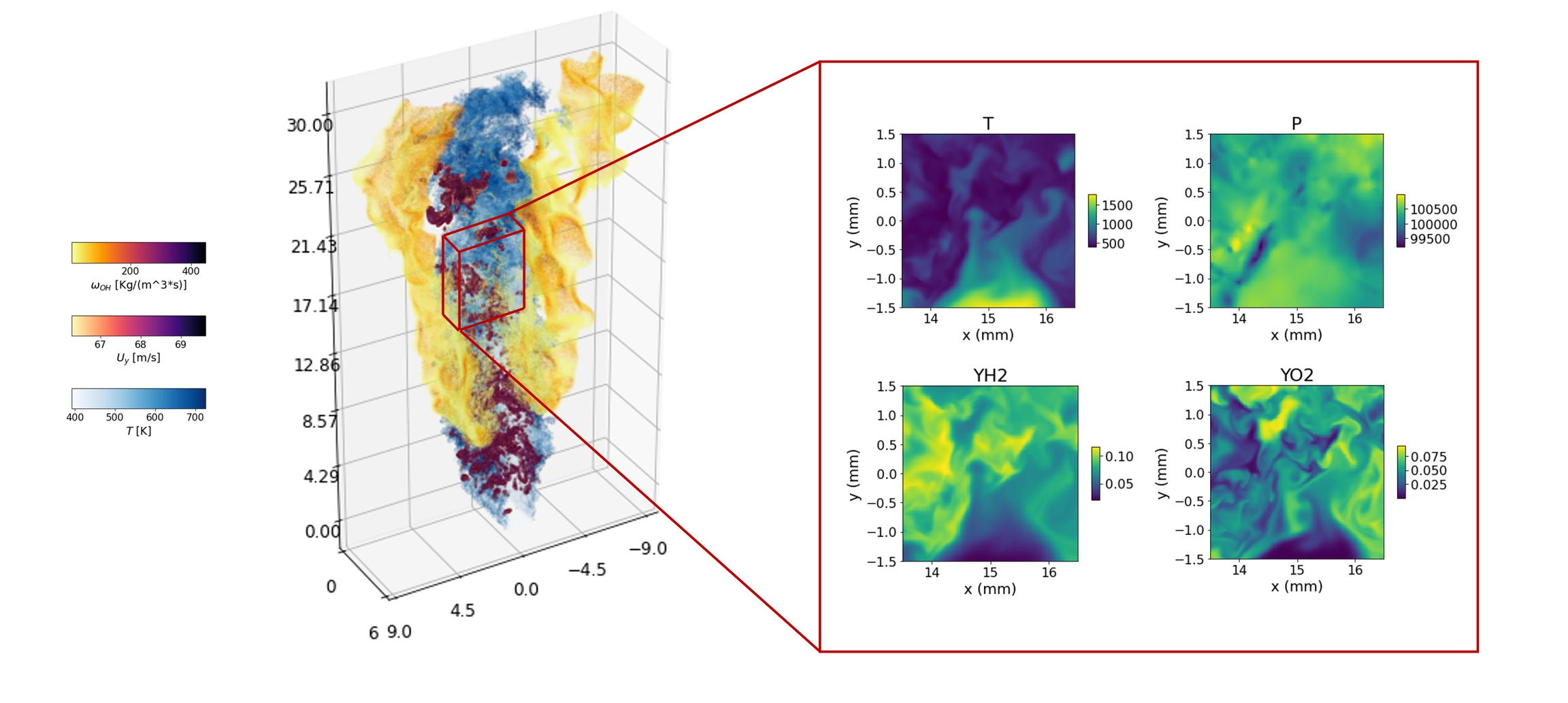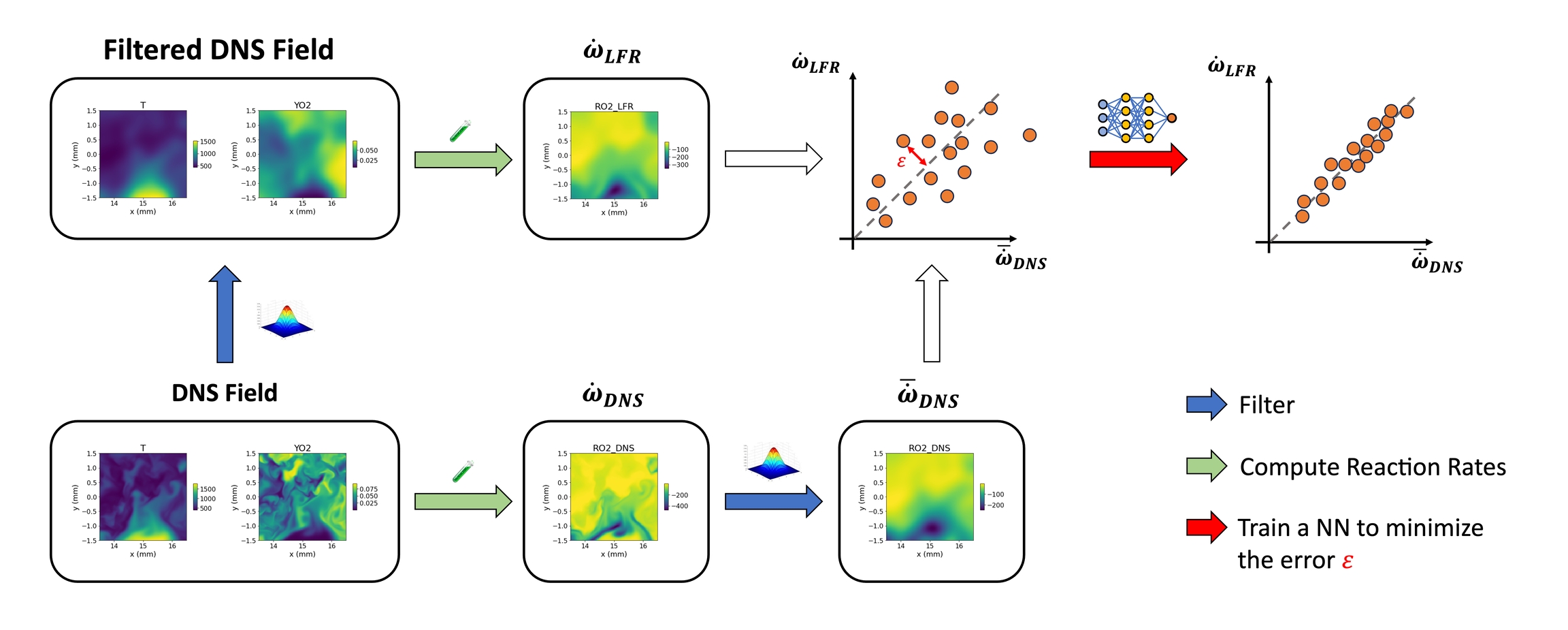Data-Driven Closure for Turbulence-Chemistry interaction
Prerequisites
Before reading this tutorial, you should know a bit of Python. If you would like to refresh your memory, take a look at the Python tutorial.
We are going to work on the reduced dataset that is available on the project's GitHub page. Make sure to download the data folder before starting.
Learner Profile
This tutorial is aimed at a user who has a solid understanding of Computational Fluid Dynamics (CFD) for Combustion. A basic understanding of Machine learning is not required.
The tutorial could also be beneficial for those who do not have strong competencies in CFD but know Data Science; in fact, apart from some computations to compute interesting quantities in reacting flows, the basic operations that we are going to perform on the data are based on filtering of 3D fields.
Dataset Description
The dataset is extracted from a DNS simulation of a lifted non-premixed hydrogen flame. The variables saved comprise Temperature, Species Mass Fractions, 3 Velocity components, and Pressure. The chemical mechanism used comprises 9 species.

What you will learn
You will learn:
how to use aPriori to compute the chemical source terms,
how to filter the results obtained to resemble an LES field,
and build a data-driven closure based on Neural Networks to model the subgrid interactions between Turbulence and Chemistry.
A-priori methodology
